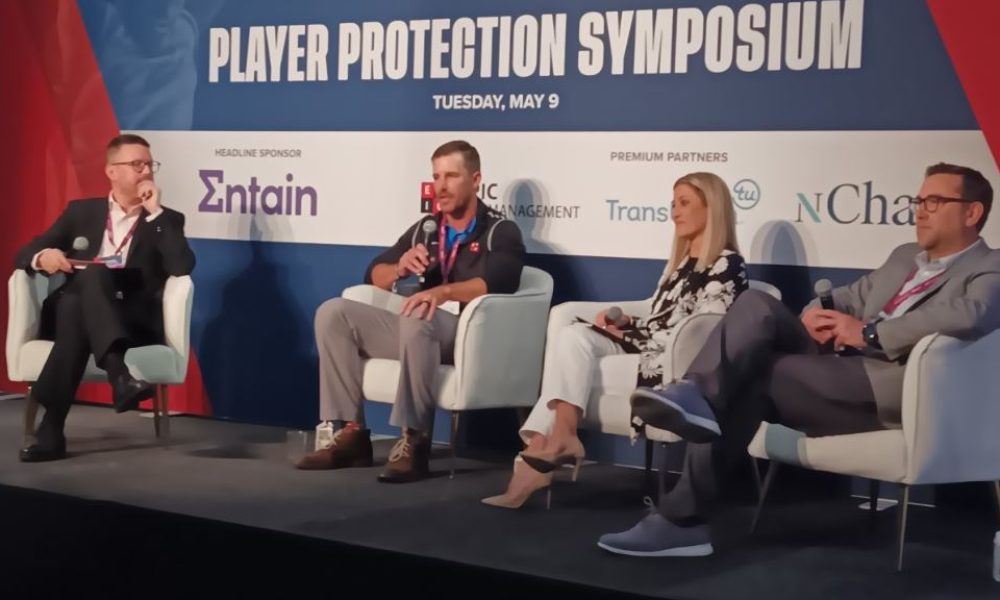Ryan Tatusko knew he had a gambling problem.
He was playing minor league baseball, making $6,000 per year. He was told to eat healthily, but at times he grabbed a few hot dogs from the clubhouse for his evening meal. Other times he went out to buy groceries, but instead found himself at a casino, then returned home with no food and no explanation for what happened. He thought that because of his experiences in sports – Tatusko eventually pitched for the Texas Rangers and Washington Nationals – he knew better than the oddsmakers.
Tatusko, who Tuesday spoke at SBC Summit North America’s Player Protection Symposium in Manhattan, now recognizes his gambling issues began when his athletic talents started to emerge and he learned how to take risks, a penchant that followed him throughout his professional career.
“When I lost, that’s all I could think about,” said Tatusko, who currently works as a public speaker for Epic Risk Management, during the session “The Value of Lived Experience in Preventing Harm in Sports” at the Altman Building in Chelsea. “It wasn’t necessarily about winning; winning didn’t mean that much to me. I didn’t want to lose. It was a competition between me and whoever was across the poker table from me. That was a really big factor and my proliferation for risk continued as my career went forward.”
Hosted by Paul Buck, CEO and co-founder of Epic Risk Management, the session examined how programs that include lived experienced can be helpful in addressing problem-gambling issues.
If young athletes seem particularly susceptible to gambling, it’s because of their innate competitiveness, according to Dr. Meg Popovic, co-founder and chief learning officer for NextPlayU and former director of player welfare and performance for the Toronto Maple Leafs. “It’s what makes them great,” Popovic said.
But what happens, especially in hockey where young athletes often leave home at 14 to pursue professional careers, is that competitiveness becomes an issue when there are large tracts of time to fill. Flush with funds – the minimum salary in the NHL is $750,000 – athletes between the ages of 18-24 might be done with their workdays early in the afternoon.
“They’re totally socially isolated,” Popovic said. “What do you do from 2 o’clock to 12 o’clock? What if all you want to do is compete and you’re shaking, because you’re so nervous about your spot (on teams). That’s not even considering a concussion or injury or whatnot. It’s just the normal day-to-day life.”
Even on game days, Popovic said, young athletes have an inordinate amount of free time and can be living in a small condo “with nothing on the walls, 800 square feet, with bedding that’s not even yours. What do you do?
“Gambling or gaming or playing video games with your buddies with your headset on – that’s what 18-year-olds do. They’re the same age as freshmen in college.”
Clint Hangebrauck, the NCAA’s managing director of enterprise risk management, noted some factors that allow student-athletes to perform at peak levels correlate to problem-gaming issues.
“Athletes oftentimes feel that they have specialized knowledge that makes them more confident,” Hangebrauck said.
That’s part of the reason Haugenbrauck believes it’s important to let student-athletes know about the perils of problem gaming.
“It’s critical for us to set them up for success and help them get on that trajectory to hit the pinnacle of whatever their dreams and aspirations are in life,” Haugenbrauck said. “And the biggest thing that could derail that, and one of the biggest things in my estimation, is some sort of addiction, be that through gambling or through other addictions that are out there.”



